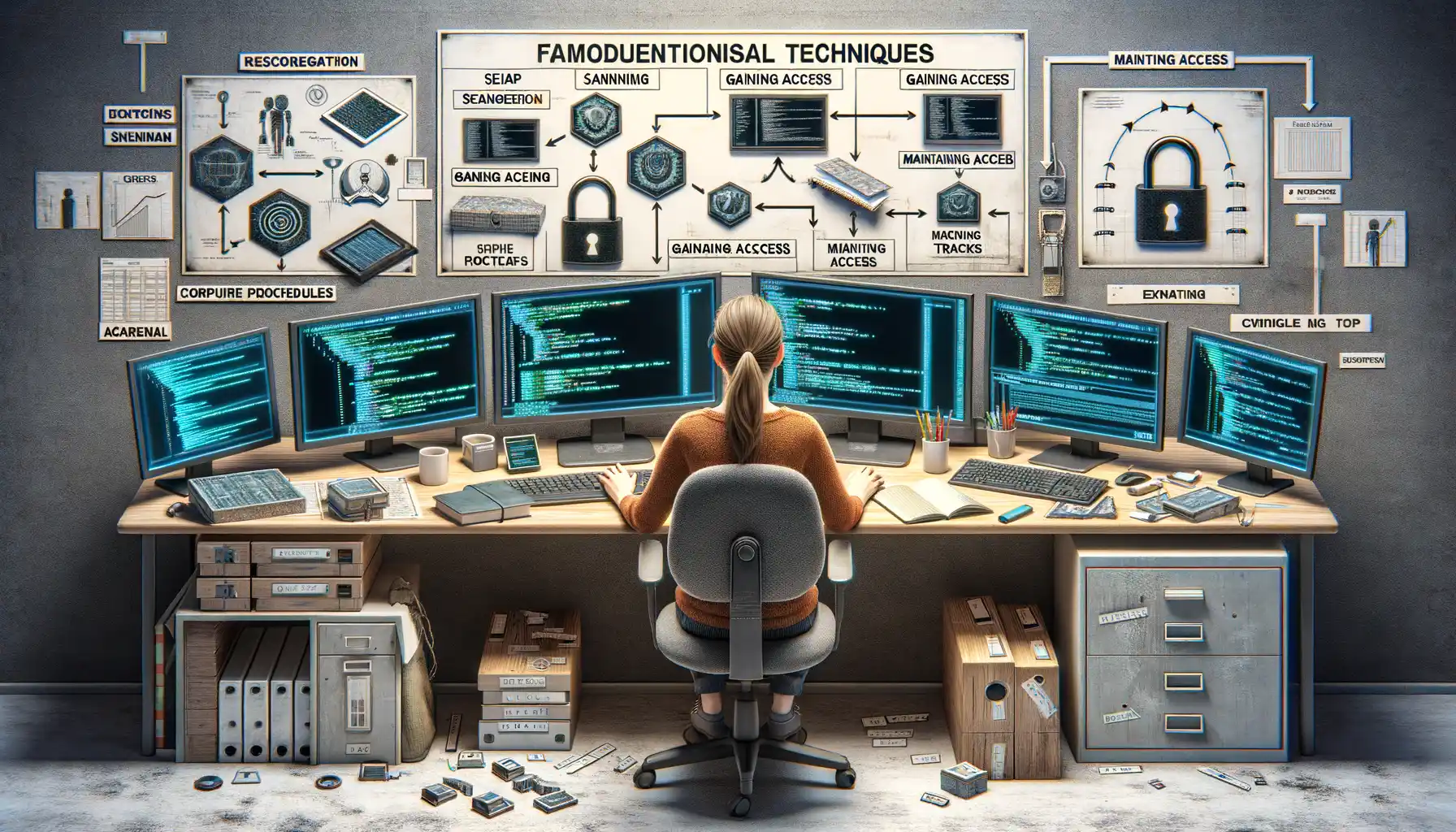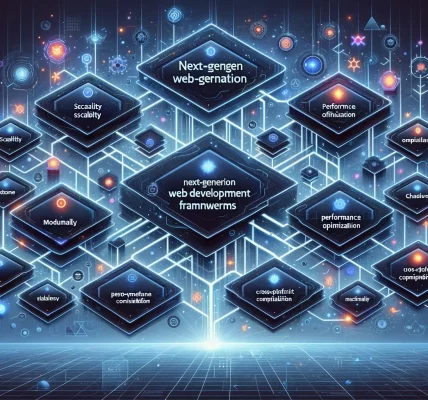Introduction to Ethical Hacking
Think of ethical hacking as the ultimate blend of curiosity, technical skill, and a moral compass. It’s like being handed the keys to a virtual castle—with permission to test its defenses. Sounds thrilling, right? But let’s strip away the Hollywood glam for a moment and dive into what it actually means to be an ethical hacker.
What Is Ethical Hacking, Really?
At its core, ethical hacking (or penetration testing) is about probing systems, networks, or devices to find vulnerabilities before bad actors do. The twist? You’re doing it with the organization’s blessing. Think of yourself as a digital locksmith, hired to ensure every door, window, and crack in the system is secured. Your mission: to think like a hacker without becoming one. How cool is that?
If you’re envisioning endless green code scrolling on black screens, you’re partly right—but there’s more. Ethical hackers employ a mix of creativity, patience, and toolkits to hunt down weak points. Some tasks might include:
- Simulating phishing attacks to test human vulnerabilities.
- Probing firewalls, Wi-Fi networks, or cloud systems for security flaws.
- Decrypting poorly protected data to highlight risks.
It’s not just about “breaking things”—it’s about fixing them too. Every flaw you uncover could be the difference between a secure online presence and a catastrophic breach.
Essential Tools for Beginner Ethical Hackers

Kickstarting Your Ethical Hacking Journey
Starting out in ethical hacking can feel like stepping into a high-tech treasure hunt. You’re not just breaking into systems—you’re unlocking knowledge, solving problems, and becoming the cyber-world’s superhero. But every hero needs their tools! Let’s gear up with some *must-have* essentials.
First, download Kali Linux. Think of it as your all-in-one Swiss Army knife for ethical hacking. Packed with pre-installed tools designed for penetration testing, it saves you time and keeps everything in one place. Don’t worry—it’s free and beginner-friendly!
You’ll also want Wireshark in your arsenal. Curious about what’s happening across networks? This tool is like eavesdropping on digital conversations (but legally). It captures packets of data traveling through the network—a goldmine for spotting vulnerabilities.
Here are other must-haves to add to your toolkit:
- Burp Suite: Perfect for analyzing web app security.
- Nmap: The radar system of hackers—map out networks and find their weak points.
- Metasploit: A powerful framework for exploiting vulnerabilities. Go ahead, level up your skills!
Each of these is more than just software—they’re keys unlocking endless opportunities in ethical hacking. Happy exploring!
Fundamental Techniques Used in Ethical Hacking

Cracking the Code: Mastering Ethical Hacking Techniques
When you dive into the world of ethical hacking, think of it like unraveling a complex mystery. Each technique is a tool in your detective kit, helping you uncover vulnerabilities and safeguard systems. Here are some key strategies that form the backbone of ethical hacking:
- Reconnaissance (Footprinting): Imagine being a digital spy! This phase is all about gathering intel. Hackers use tools like Nmap or Maltego to map networks, identify IP addresses, and learn how their target operates.
- Scanning: Once you’ve got the lay of the land, it’s time to zoom in. Scanning involves checking network doors and windows (aka ports!). Tools like Wireshark and Angry IP Scanner come in handy here.
- Gaining Access: No locked door stays shut for long. Ethical hackers simulate attacks using vulnerabilities found during scanning—like using weak passwords or unpatched software exploits.
Elevating Privileges and Covering Tracks
Once inside, it’s time for advanced maneuvers. Privilege escalation is like leveling up in a game, gaining access to sensitive data or admin rights. Equally critical is ensuring your “handshake” isn’t spotted. By practicing careful log editing and clearing digital footprints, ethical hackers stay discreet while testing a system’s defenses.
Each technique is a puzzle piece—master them, and you’ll build unbreachable systems!
Steps to Get Started with Ethical Hacking

Finding Your Footing in the Ethical Hacking World
So, you’ve decided to dive into the fascinating world of ethical hacking? Fantastic choice! Before you start imagining yourself as a cyber superhero unmasking vulnerabilities, let’s talk about the first steps—because, like any great journey, it all begins with planting your feet on solid ground.
Step 1: Familiarize Yourself with the Basics
Understanding the core concepts is key. Learn about networks, operating systems, and how software communicates. Build a relationship with tools like Wireshark and Metasploit. Don’t just know what they do—experiment, break things (ethically), and fix them. Learning by doing is your secret sauce.
Step 2: Pick a Programming Language
No coder? No problem… yet. But if you’re genuinely serious, dive into languages like Python for scripting or JavaScript for web vulnerabilities. Think of programming as your Swiss Army knife—it’ll be indispensable.
- HTML: Understand how websites are structured.
- Python: Automate repetitive tasks and create tools.
- Bash: Take command of Linux environments.
Tapping into Resources and Communities
You don’t have to learn in a vacuum. Ethical hacking thrives on collaboration and shared knowledge. Join forums like Hack The Box, follow experts on LinkedIn, and lurk on Reddit threads where ideas fly at the speed of light. Invest in courses from trusted platforms like Udemy or attend cybersecurity bootcamps. Believe me, the right resources can transform confusion into clarity faster than you’d expect.
Best Practices and Legal Considerations

Why Best Practices Define Your Ethical Hacking Journey
Diving into ethical hacking without following best practices is like embarking on a treasure hunt without a map—you might stumble upon a gem or two, but chaos will likely rule the day. Here’s the deal: sticking to a few essential guidelines isn’t just about playing it safe; it’s about mastering the art of responsible hacking. Ethical hackers thrive when they operate with precision and clarity.
Some golden rules? Start by documenting everything. Treat your notes like a journal of your digital expedition—every test, every vulnerability, every solution should be recorded. Next, keep those tools sharp! Update software regularly to dodge hiccups caused by outdated versions.
And remember: communication isn’t optional. Work closely with stakeholders, whether it’s your client or your team. Transparency builds trust, and that trust is what sets an ethical hacker apart from their less virtuous counterparts.
- Plan meticulously: Before launching tests, have crystal-clear goals.
- Respect boundaries: If you’re testing someone’s system, get explicit written consent—no exceptions!
Legal Pitfalls You Can’t Afford to Ignore
Think ethical hacking operates in a legal gray zone? Think again. The law isn’t a flexible friend—it’s an unflinching referee. Crossing legal lines can swiftly turn even well-intentioned actions into a nightmare scenario. Let me spell it out: always obtain permission before engaging in any hacking activities. No consent? No action—simple as that.
Consider this: the Computer Fraud and Abuse Act (CFAA) in the U.S. holds serious consequences for unauthorized access. Violating these laws isn’t just unethical; it could land you with hefty fines or even jail time. Research the regulations in your specific country or region because ignorance won’t save you.
Pro tip? Keep a signed agreement that outlines the scope of your work. This “get out of jail free card” ensures you stay within lawful boundaries while doing what you do best—protecting systems from harm.












